Sugar Maple: Acer saccharum
The Process of Nutrition and Fall Leaf Color Change of Acer saccharum
Photosynthesis
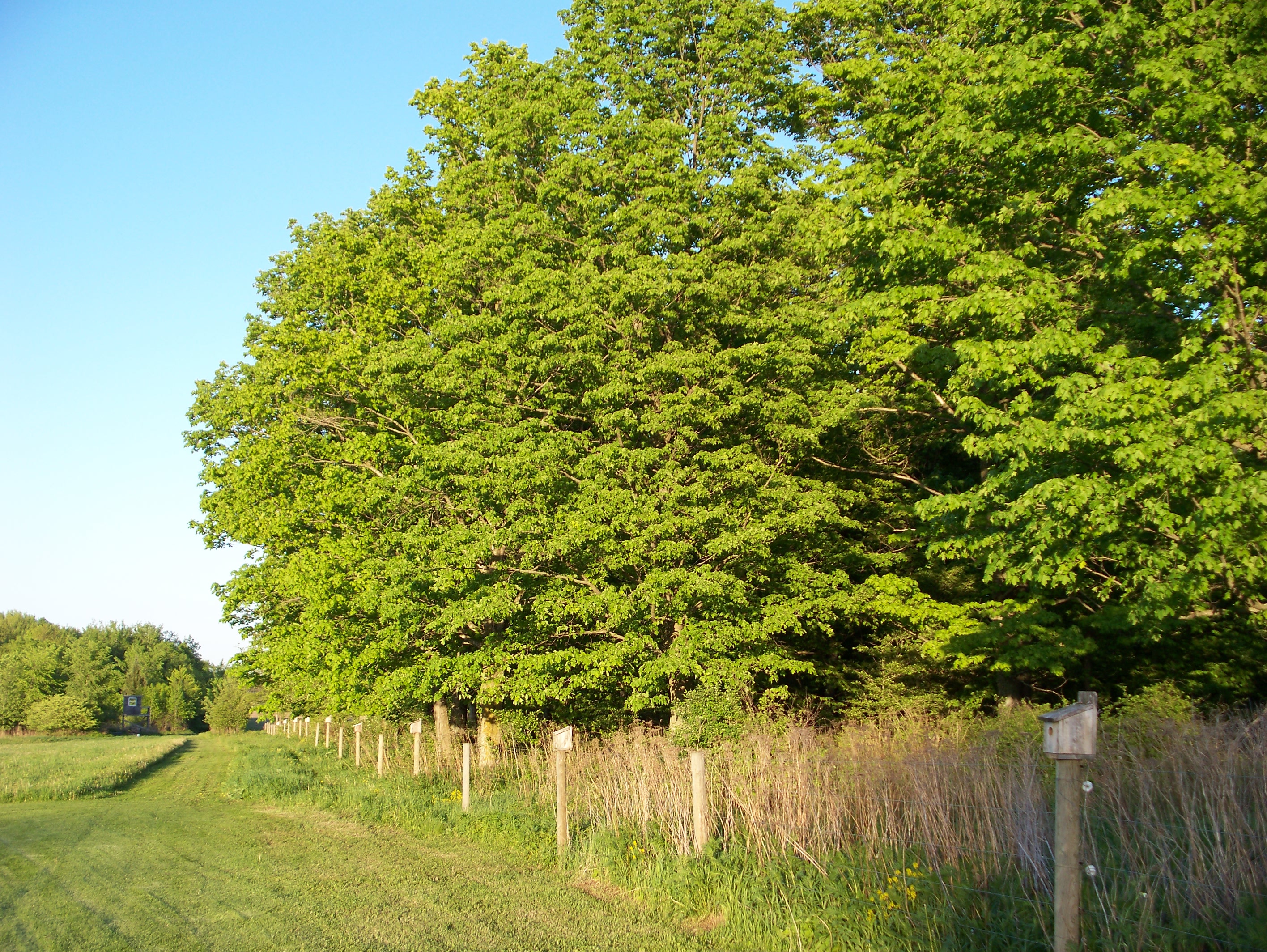 Sugar Maples, like all plants, are photoautotrophs, meaning they
produce their own food from sunlight, carbon dioxide, and water in a
process called photosynthesis. By this process, plants can then produce
oxygen and organic compounds (mostly sugars). Not only can the plant
produce food necessary for it to survive, but it also produces vital
oxygen necessary for humans and many other organisms to survive. For a Sugar Maple
tree, as for most
plants, the leaves are the sites of photosynthesis.
Sugar Maples, like all plants, are photoautotrophs, meaning they
produce their own food from sunlight, carbon dioxide, and water in a
process called photosynthesis. By this process, plants can then produce
oxygen and organic compounds (mostly sugars). Not only can the plant
produce food necessary for it to survive, but it also produces vital
oxygen necessary for humans and many other organisms to survive. For a Sugar Maple
tree, as for most
plants, the leaves are the sites of photosynthesis.
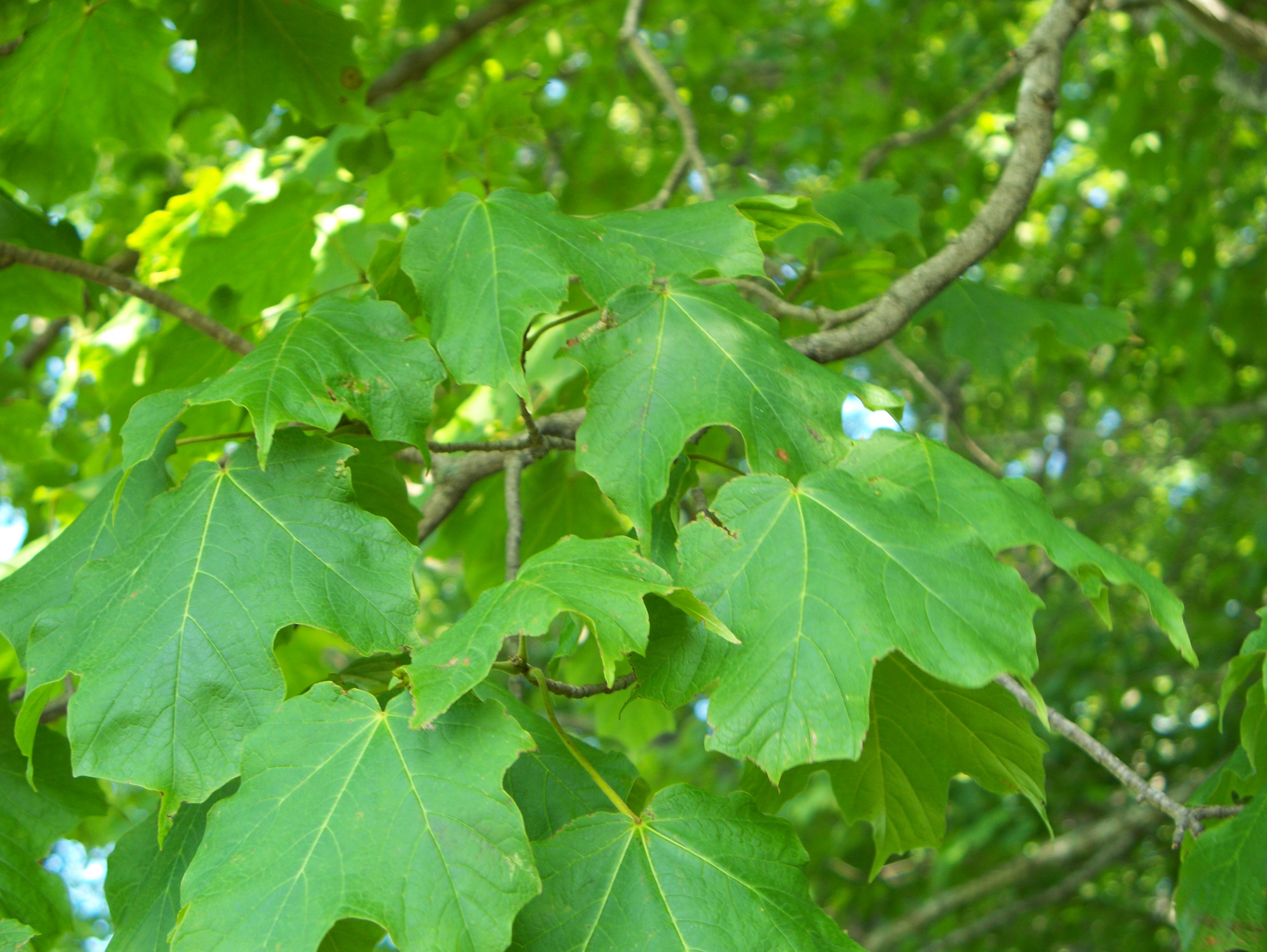 But how does everything get there? Water and minerals first enter the
plant through its root system and is then transferred up the plant via
specialized vascular tissue called xylem. Eventually the water reaches
the leaves where it can then be used in photosynthesis. The leaves also
contain special openings called stomata that allow carbon dioxide to
enter the cells to be used in photosynthesis and for oxygen to
leave into the environment.
But how does everything get there? Water and minerals first enter the
plant through its root system and is then transferred up the plant via
specialized vascular tissue called xylem. Eventually the water reaches
the leaves where it can then be used in photosynthesis. The leaves also
contain special openings called stomata that allow carbon dioxide to
enter the cells to be used in photosynthesis and for oxygen to
leave into the environment.
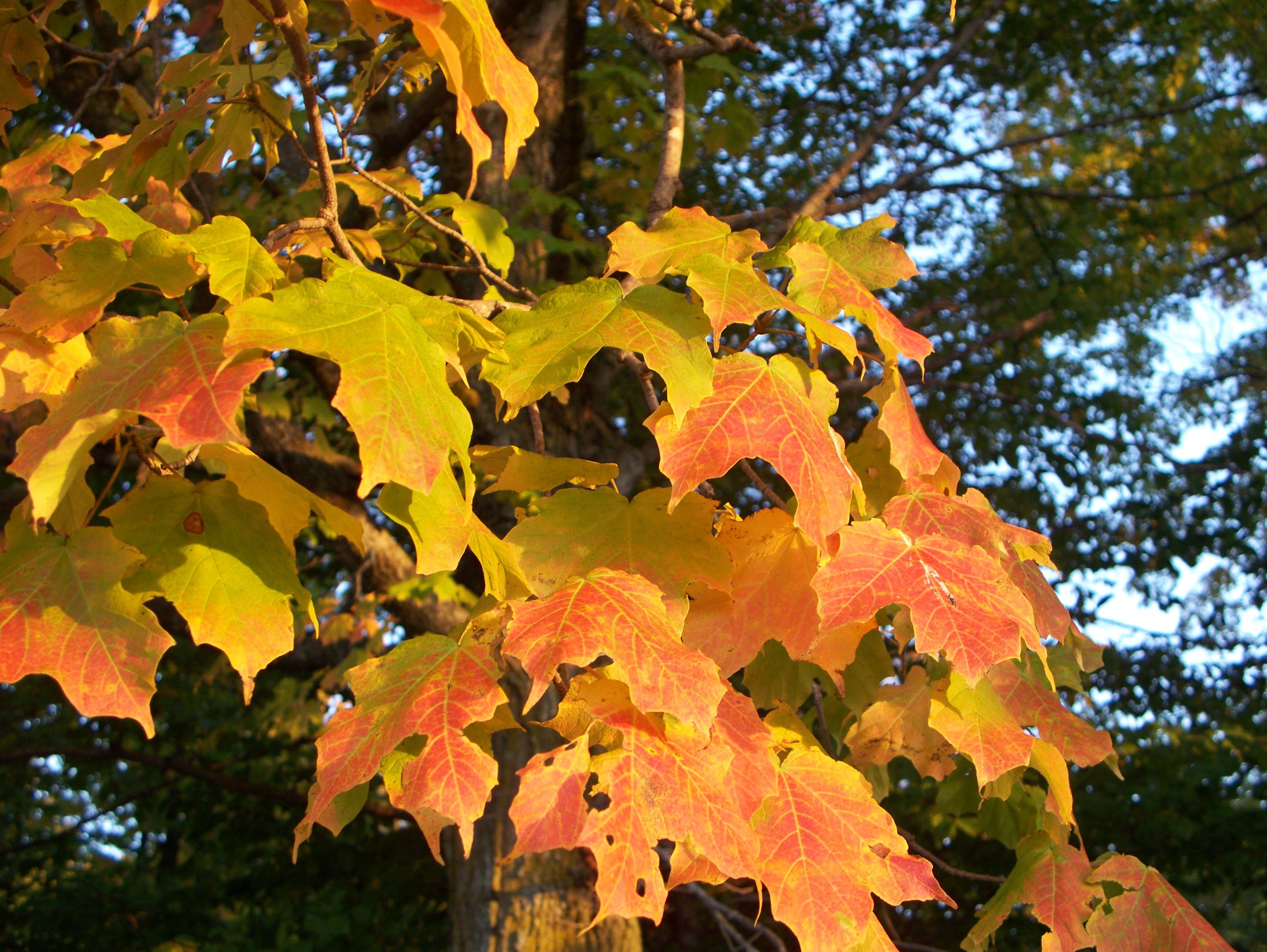 Chlorophyll
is a green pigment found in leaf cells giving them their green color.
These pigments can absorb light from the sun and use it for
photosynthesis. Sugar Maple trees also contain other pigments called carotenoid, which are yellow/orange pigments, and anthocyanins, which
are red pigments. The last two pigments are not seen in Maple Trees all
times of the year, mostly because chlorophyll is highly expressed the
rest of the time essentially washing out the other pigments.
Chlorophyll
is a green pigment found in leaf cells giving them their green color.
These pigments can absorb light from the sun and use it for
photosynthesis. Sugar Maple trees also contain other pigments called carotenoid, which are yellow/orange pigments, and anthocyanins, which
are red pigments. The last two pigments are not seen in Maple Trees all
times of the year, mostly because chlorophyll is highly expressed the
rest of the time essentially washing out the other pigments.
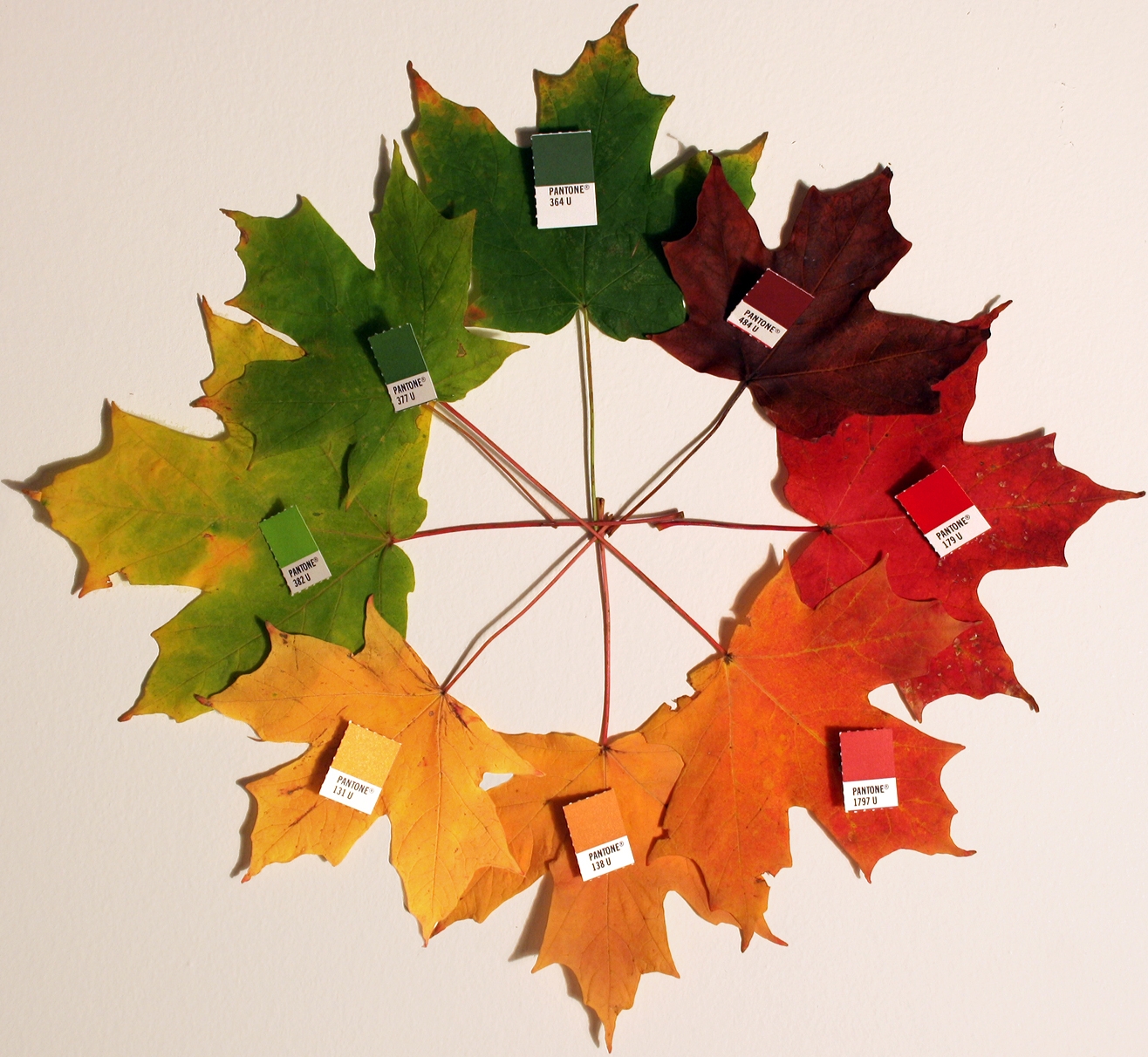 Specialized leaf cells contain organelles called choloroplasts, which
are the real site of photosynthesis. Inside these chloroplasts are many
chlorophyll pigments. Through a series of light and dark reactions, with
the help of photosystem proteins and chlorophyll, the chloroplasts can
make oxygen and sugars from carbon dioxide and water. To learn more
about the biochemistry behind the photosynthetic reactions
click
here.
Specialized leaf cells contain organelles called choloroplasts, which
are the real site of photosynthesis. Inside these chloroplasts are many
chlorophyll pigments. Through a series of light and dark reactions, with
the help of photosystem proteins and chlorophyll, the chloroplasts can
make oxygen and sugars from carbon dioxide and water. To learn more
about the biochemistry behind the photosynthetic reactions
click
here.
Once sugar and oxygen are generated they need to be transported out of the leaves. The oxygen can exit into the environment through the same stomata that carbon dioxide entered in. The sugar produced after photosynthesis are transported to other tissues throughout the plant via a specialized vascular tissue called the phloem.
Fall Leaf Color Change
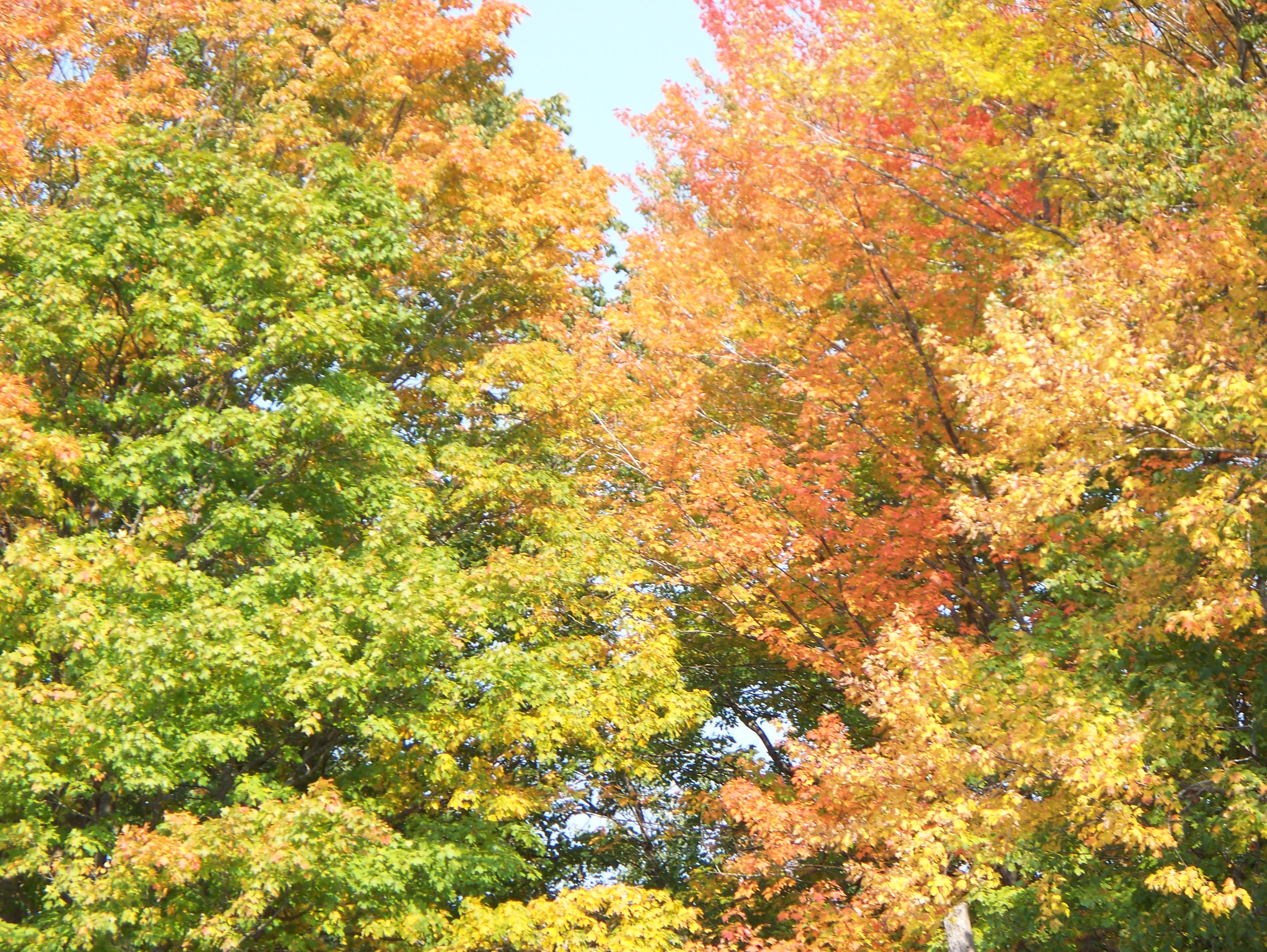 As was previously discuss, chlorophyll is extremely important in
plant’s leaf cells to produce sugars via a process called
photosynthesis. This type of pigment is found during most of the plant’s
growing season, which is during the spring and summer months. Most
plants also contain a pigment called carotenoid, as discussed, which
creates a yellow/orange color. This pigment, as well, is found during most
of the growing season, but chlorophyll washes out its color, which
explains why Sugar Maple leaves are green during the spring and summer
months. Unlike most trees, Sugar Maples also contain a pigment called anthocyanin which
gives plant leaves a red color. This pigment,
unlike the other two, is only expressed in the autumn months and under
conditions where the days become shorter, the nights longer, and the
temperature drops slowly. As this happens, there is less and less
sunlight, causing the tree to produce less chlorophyll until chlorophyll
production ceases. As less chlorophyll is made, the other pigments
within the leaves can begin to be expressed. The rate at which this
happens varies from leaf to leaf in Sugar Maple, so the leaves of one
single tree can give a whole assortment of colors at any given time.
As was previously discuss, chlorophyll is extremely important in
plant’s leaf cells to produce sugars via a process called
photosynthesis. This type of pigment is found during most of the plant’s
growing season, which is during the spring and summer months. Most
plants also contain a pigment called carotenoid, as discussed, which
creates a yellow/orange color. This pigment, as well, is found during most
of the growing season, but chlorophyll washes out its color, which
explains why Sugar Maple leaves are green during the spring and summer
months. Unlike most trees, Sugar Maples also contain a pigment called anthocyanin which
gives plant leaves a red color. This pigment,
unlike the other two, is only expressed in the autumn months and under
conditions where the days become shorter, the nights longer, and the
temperature drops slowly. As this happens, there is less and less
sunlight, causing the tree to produce less chlorophyll until chlorophyll
production ceases. As less chlorophyll is made, the other pigments
within the leaves can begin to be expressed. The rate at which this
happens varies from leaf to leaf in Sugar Maple, so the leaves of one
single tree can give a whole assortment of colors at any given time.
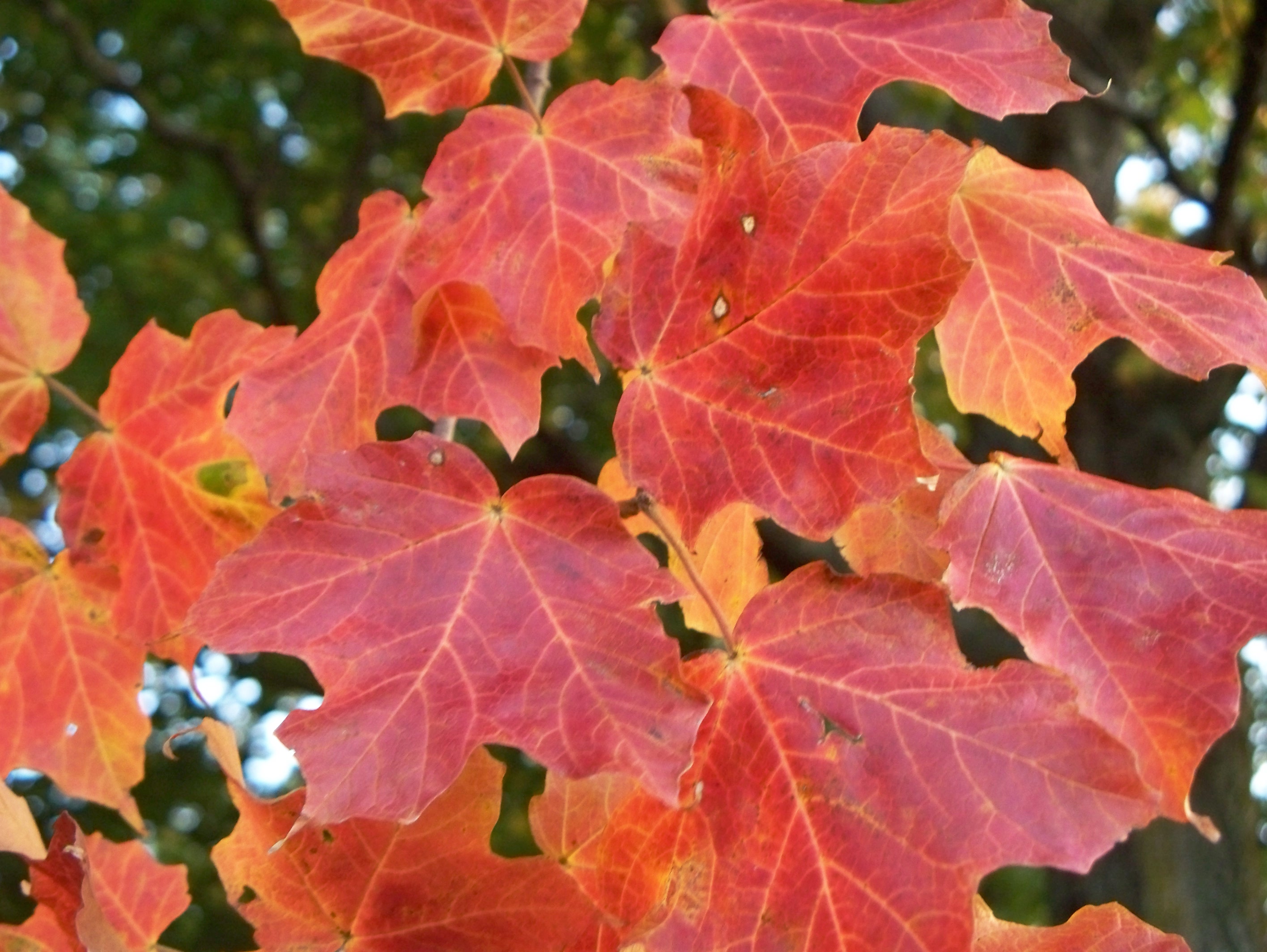 Previously it was stated that anthocyanins are expressed under
certain conditions.
This expression too can vary from tree to tree, or from year to year.
Years where the autumn months do not result in freezing nights, the anthocyanins are not expressed as well. As a result the trees are not as
brilliantly red
those years. But years where the freezing temperature
results in frost conditions are not good for autumn colors either, as
the leaves will most likely die, just causing them to dry up and turn
brown. It has been found that the years with the best autumn colors are
one in which the spring is warm and wet, the summer is not too hot or
dry, and where the fall is warm and sunny during the day and cool at
night.
Previously it was stated that anthocyanins are expressed under
certain conditions.
This expression too can vary from tree to tree, or from year to year.
Years where the autumn months do not result in freezing nights, the anthocyanins are not expressed as well. As a result the trees are not as
brilliantly red
those years. But years where the freezing temperature
results in frost conditions are not good for autumn colors either, as
the leaves will most likely die, just causing them to dry up and turn
brown. It has been found that the years with the best autumn colors are
one in which the spring is warm and wet, the summer is not too hot or
dry, and where the fall is warm and sunny during the day and cool at
night.
Why do some plants have anthocyanins and not others? Anthocyanins in
trees like the Sugar Maple have been found to be a form of protection for
the tree. They help the tree to take up as many nutrients as it can from
the leaves before they fall off in the fall. This way the tree can be as
healthy as possible for the following spring when it has to begin to
grow again. When the days get colder and colder during the winter, the tree must lose all of its leaves to survive because they cannot handle
the
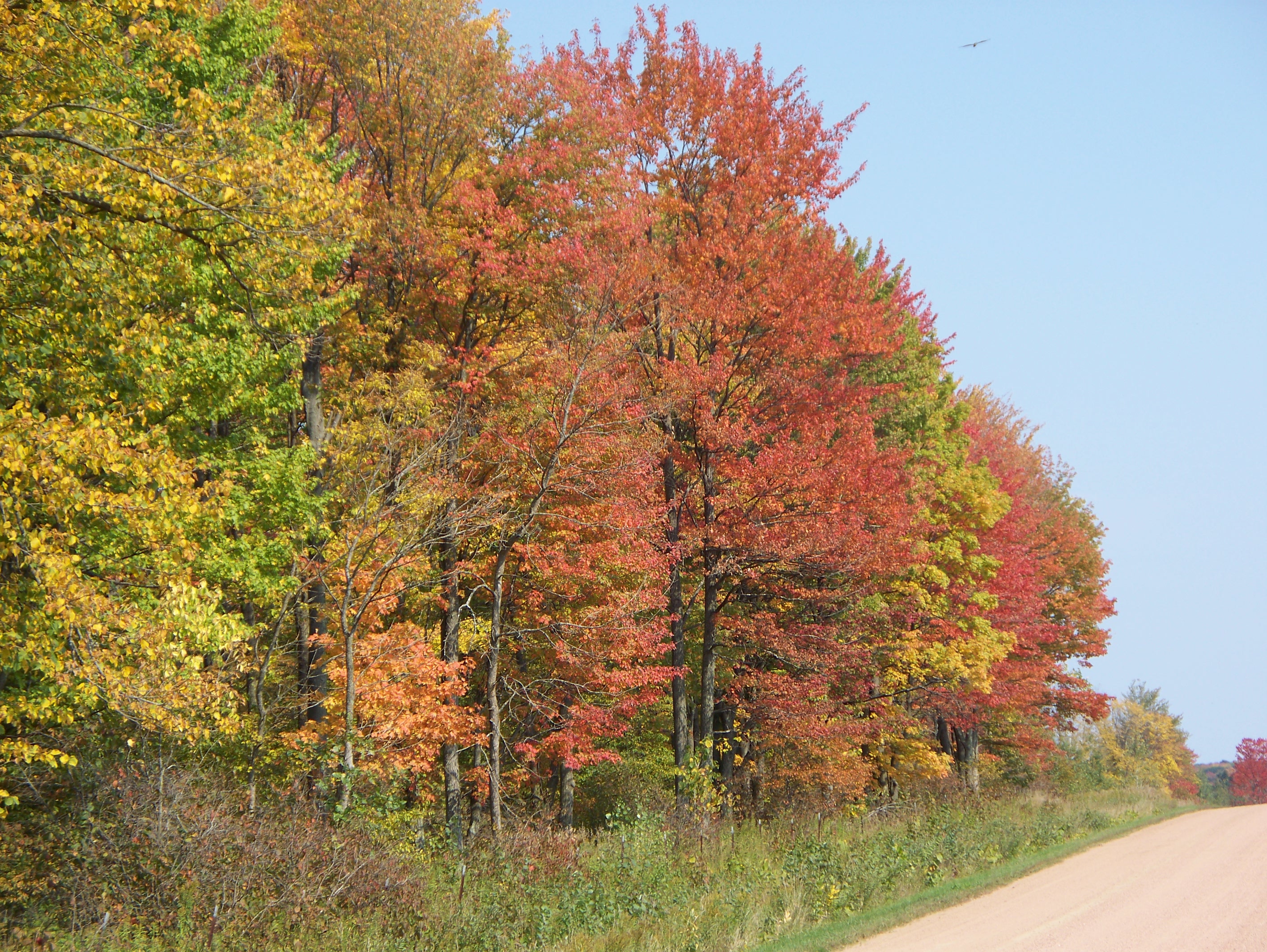 freezing temperatures. So as the day lengths shorten in the fall,
the vessels that carry sap in the leaf begin to close off. Then a
separation layer forms between the leaf and the branch sealing it off.
Now the leaf can fall without any damage to the tree. Interestingly, the
leaves will fall to the ground and begin to decompose and become part of
the soil, which is important for all species, plus the Sugar Maple plant
can reabsorb some of the minerals for the next growing season. To learn
more about the importance of leaf litter to other species refer to the
Interactions page.
freezing temperatures. So as the day lengths shorten in the fall,
the vessels that carry sap in the leaf begin to close off. Then a
separation layer forms between the leaf and the branch sealing it off.
Now the leaf can fall without any damage to the tree. Interestingly, the
leaves will fall to the ground and begin to decompose and become part of
the soil, which is important for all species, plus the Sugar Maple plant
can reabsorb some of the minerals for the next growing season. To learn
more about the importance of leaf litter to other species refer to the
Interactions page.
You think Fall leaf color change is cool! Check out the Making Maple Syrup page to learn how Acer saccharum can be used to make Maple Syrup. To return to the Acer saccharum Homepage click here.